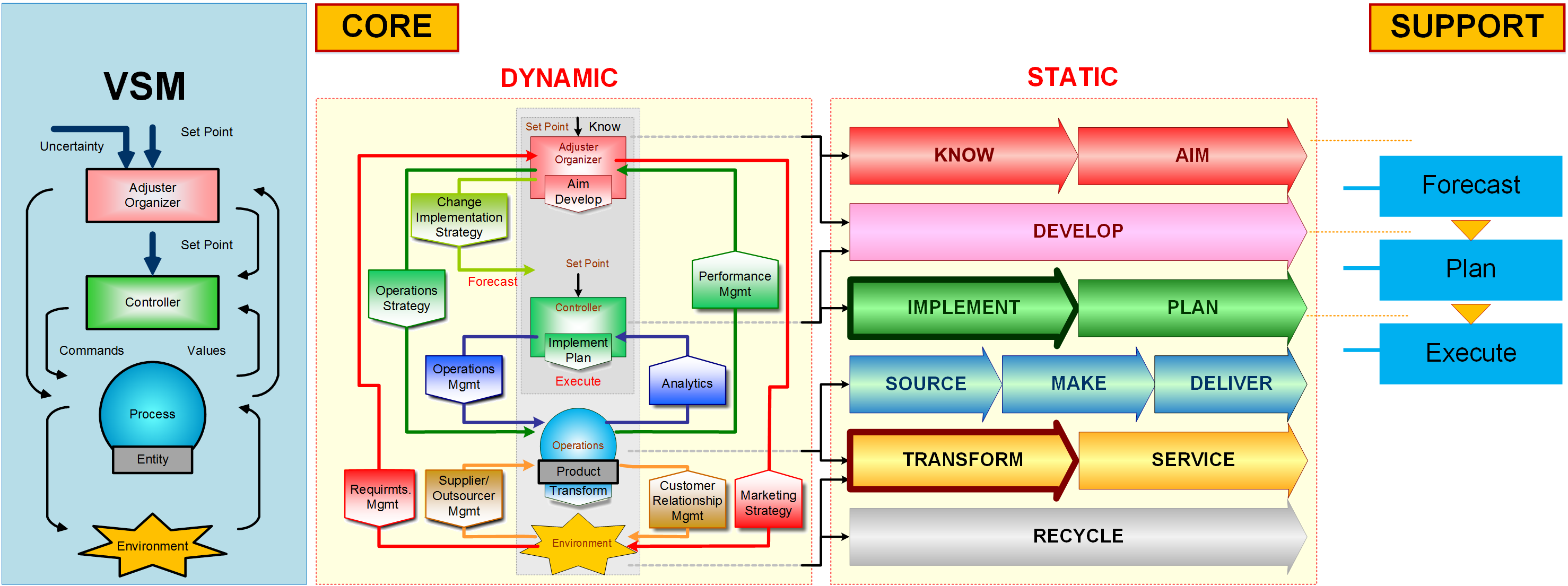 Blog
Blog
Business Organization and The Adaptive Enterprise Operational Platform (AEOP)
To recap the previous sections, traditional business can be modeled using the Viable System Model concept. This model has its controller split in two (internal vs. adjuster) and is organized around four cycles: sale, product manufacturing, new product development, and overall setting business goals. A unified framework can be represented by the classes of processes mentioned above. However, they represent a layered static structure of main business cycles. To be complete, to this processes we need to add the link between all these layers. Together with service-like support processes, they form the detailed functional map.

The second most important characteristic is the complexity of processed information. This can be expressed using a simple scale. The wider the range of options information has, the higher the complexity of processes needed to handle it. For instance, forecasting is higher in complexity than execution. As a result, a standard career path needs to start from simpler tasks, as those found in core operations, towards more complicated ones, as planning and forecasting.
Stafford Beer is one of the first that recognized viability, expressed as the ability to adapt to an uncertain input from environment, as the most important characteristic of a business. A basic adaptive open model built around an entity has two elements: controller and the controlled process. Long term viability is made possible only if the controller is able to anticipate various uncertain scenario and integrate a response to them in the long term planning for its operations.
